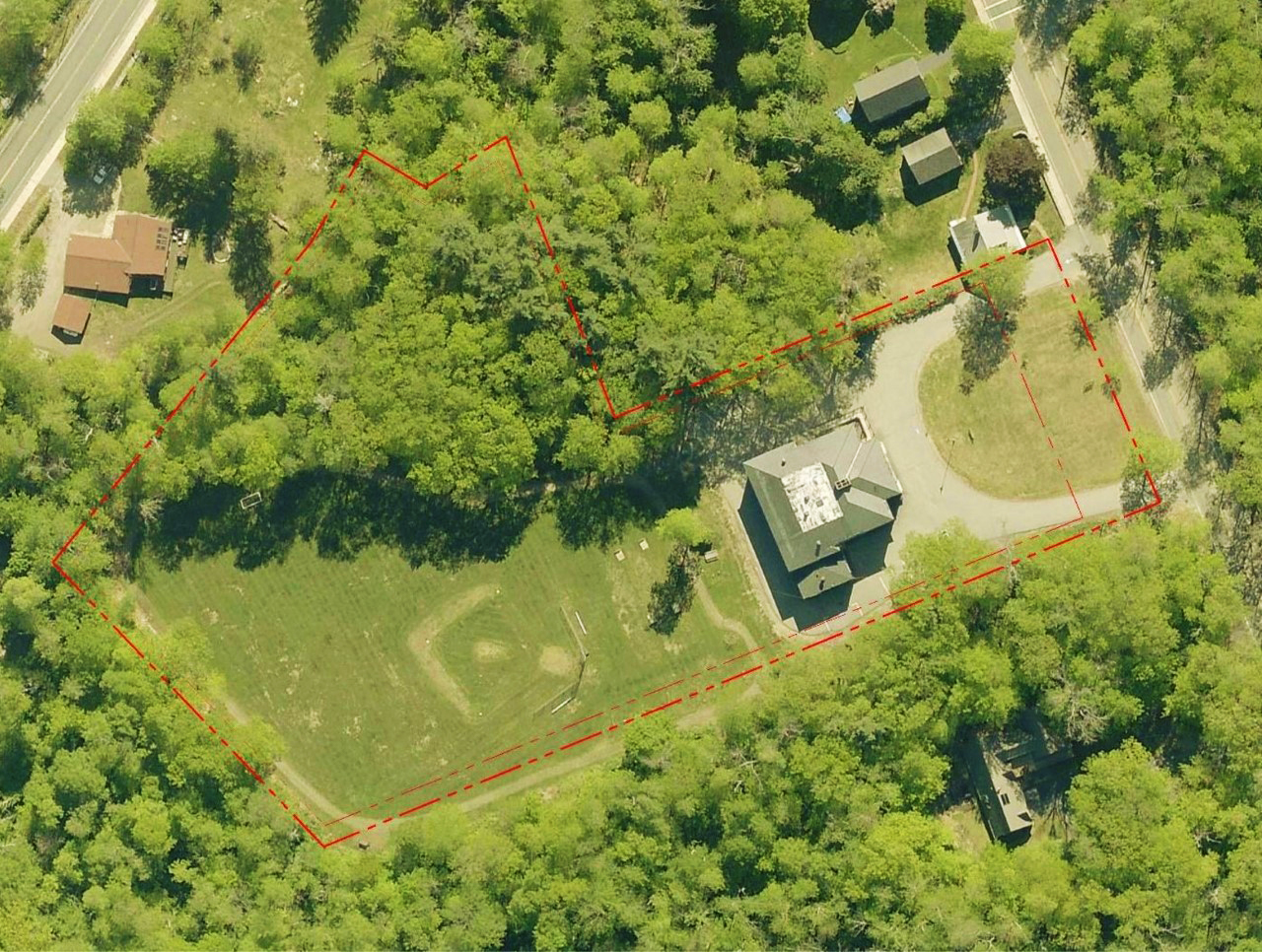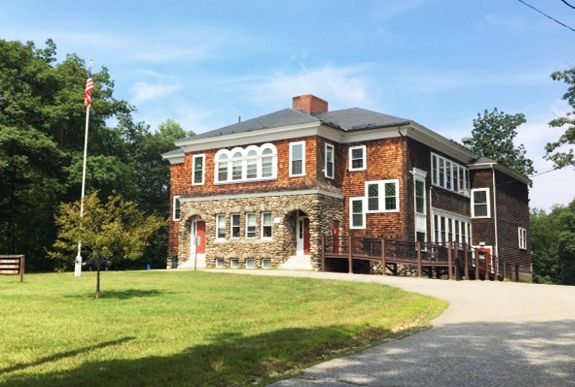By Danielle Ray
Voters will be asked to fund the creation of design and construction documents for a new public safety building at the site of the Princeton Center School on Boylston Ave. at the 2021 Annual Town Meeting.
The results of the vote will determine not just whether the town moves to the next step in the construction process, but also whether voters prefer to build an entirely new building or build one that incorporates part of the existing building.
“We have been working on this for multiple years,” said Selectboard Chair Karen Cruise, who is part of the team working on the public safety building along with Fire Chief John Bennett, Police Chief Michele Powers, Advisory Committee member Rick McCowan, and Princeton resident Ian Catlow. “We have two designs that are conceptual for the town to look at and vote on.”
Cruise said the existing building on Boylston St., which was used as a school from 1906 to 1991, “will probably be taken down and replaced with the public safety building.”
“We picked the location several years ago because it is a large enough parcel, near the center of town, and just about as high up the hill as the existing building,” Cruise said. “We need a central location because we need to be able to get water on fires as quickly as possible. We also need to be able to get an ambulance to someone quickly. The reason for putting the station near the top of the hill is because the trucks are full of water and it takes a long time to climb a hill with a truck full of water. It is better to travel downhill.”
The second design proposal would incorporate the front of the existing building.
“That design is not ideal for police and fire and is more expensive,” Cruise said. “We will show it, but we are not recommending it.”
Cruise said the Selectboard will be placing an article on the town meeting warrant this year seeking funds to complete the design and construction documents for the selected design.
“Ideally, those documents would be completed by the end of calendar year 2021,” she said. “Having those documents makes our project shovel-ready. We are hoping that there will be some federal or state infrastructure funds that we can apply for to help offset the cost to the taxpayers. At some point we will have to go to voters for the funds to build the building.
Given the need for the building and the fact that municipal construction costs rise faster than inflation, we can’t wait too long for outside funding,” she continued. “Once we have funding to build the building it should take about a year.”
The public safety building team held its first public information session virtually on Feb. 25 and plans to hold two additional sessions. Around 30 people attended the first session where the architecture firm, Caolo & Bieniek, went over the project history, the two designs, and costs, and then held a Q-and-A.

COURTESY: Caolo & Bieniek
“We answered a lot of questions,” Cruise said. “Nothing was decided since it wasn’t that type of meeting. It was to show residents what the team has come up with, talk about the advantages and disadvantages of the two designs, talk about costs, and answer questions.”
Cruise said there were questions about the Emergency Operations Center (EOC) portion of the building, “since it is a large space.”
An EOC is a central facility, planned and prepared for in advance, used by government officials for coordinating the response and recovery efforts needed during any type of disaster or critical incident. The facility must have the physical resources required to support government officials as they gather information and direct operations. The term EOC sometimes refers to the facility and equipment but may also refer more broadly to the operations run out of the physical EOC space.
“Residents seemed to be pleased that the room will not just sit idle waiting for an emergency,” she said. “It will be used on a regular basis for public safety training including police, fire, and EMS, and also for town board and committee meetings.”
Cruise explained that each space in the public safety building has been diligently discussed and planned.
“There are several critical spaces in the new building that aren’t very well understood by residents and we felt the need to explain, for example, the EOC,” Cruise said. “Other spaces that are critical but may seem like overkill are the police booking area and holding cells, the shared fitness space, and three double apparatus bays.”
According to an email the town sent out on Feb. 16, a letter from police and fire detailing the need for an EOC, Princeton has had numerous incidents where an EOC was needed.
“Some of the most recent include the COVID pandemic, the 30 Mountain Rd (Princeton Inn) fire in 2017, the Vanessa Marcotte murder investigation in 2016, the Ball Hill Rd. explosion in 2012, and the ice storm in 2008. Other notable incidents are when the Princeton Fire Chief was accused of drug theft in 2012, a seven-mile brush fire started by a train in 2007, and a major train accident in 1989,” the letter stated. “The advantages of having the EOC attached to the new public safety building are the ready availability of communications, backup power, kitchen, restrooms, showers, laundry, extra meeting spaces (allowing for sidebar meetings to occur away from the operations floor), and secure entry control. The EOC/Training/Meeting room, at 900 square feet, is a significant investment for taxpayers. The Fire and Police departments hope that we have helped you understand why this is a necessary and important investment in the Town’s future.”
Primary functions of the EOC are coordination, policy making, operation management, information and record keeping, public information management, managing the media, and hosting visitors such as press events, state officials, consultants, or vendors.
“All towns need a facility that they can use in emergency situations where they can pull together all the relevant parties in a central location to manage the crisis,” Cruise said. “There must be adequate room, living facilities, communications equipment, and other logistical facilities.”



